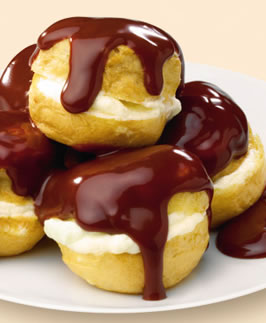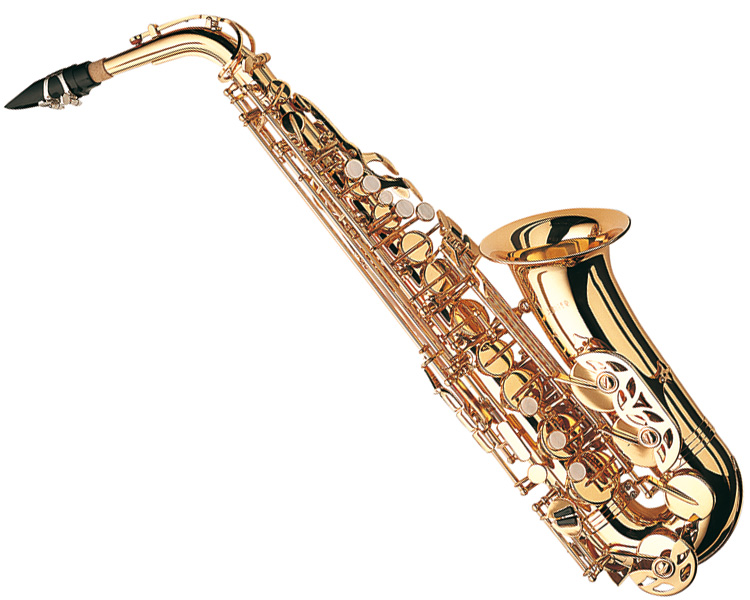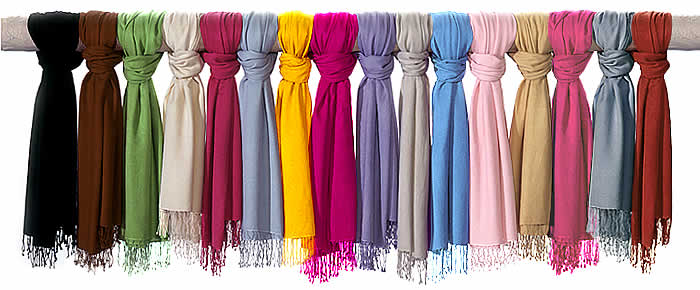I have realized over the years that I love to talk about food, especially good food. These foods and drinks, however, are delicieux and are most likely to be seen on French menus.
 Croissants- Among the many popular breakfast foods, this crescent-shaped pastry is dunked in butter, delicately wrapped, and baked to perfection. In French, croissant means 'crescent', obviously named for its shape. Croissants are the backbone to French pâtisseries throughout the world and are praised for their airlike texture and fluffiness. They can be filled with chocolate, Nutella, jam, fruit, dried fruit, almonds, cheese, ham, or spinach.
Croissants- Among the many popular breakfast foods, this crescent-shaped pastry is dunked in butter, delicately wrapped, and baked to perfection. In French, croissant means 'crescent', obviously named for its shape. Croissants are the backbone to French pâtisseries throughout the world and are praised for their airlike texture and fluffiness. They can be filled with chocolate, Nutella, jam, fruit, dried fruit, almonds, cheese, ham, or spinach.
 Quiche- In ze French language, ze word quiche is originated from 'cake'. Although this dish is more like pie, it is equal in deliciousness. And, just like pie and cake, quiches come in many different sizes and fillings. They all contain eggs, but also have ingredients such as cheese, fruit, bacon, spinach, pepper, ham, turkey, mushroom, broccoli, and/or shellfish. At Pain d'Epis in Paris, I had my first quiche, a petit œuf, fromage(cheese), jambon(ham), et spinach quiche. Très bien!
Quiche- In ze French language, ze word quiche is originated from 'cake'. Although this dish is more like pie, it is equal in deliciousness. And, just like pie and cake, quiches come in many different sizes and fillings. They all contain eggs, but also have ingredients such as cheese, fruit, bacon, spinach, pepper, ham, turkey, mushroom, broccoli, and/or shellfish. At Pain d'Epis in Paris, I had my first quiche, a petit œuf, fromage(cheese), jambon(ham), et spinach quiche. Très bien!
 Croque-Monsieur- In Paris, the first (and only) time I had this sandwich was at a small café on a street corner, overlooking la Tour Eiffel, and I haven't been able to recreate it since. This oddly named entrée is a heavenly upgraded grilled ham and cheese sandwich. From the word croquer meaning 'to crunch' and monsieur meaning 'mister', no one quite knows how this spectacular dish was named. We do know, however, that a croque-monsieur is a grilled ham and cheese sandwich with creamy white sauce inside and melted cheese outside. C'est super!
Croque-Monsieur- In Paris, the first (and only) time I had this sandwich was at a small café on a street corner, overlooking la Tour Eiffel, and I haven't been able to recreate it since. This oddly named entrée is a heavenly upgraded grilled ham and cheese sandwich. From the word croquer meaning 'to crunch' and monsieur meaning 'mister', no one quite knows how this spectacular dish was named. We do know, however, that a croque-monsieur is a grilled ham and cheese sandwich with creamy white sauce inside and melted cheese outside. C'est super! 
Beef Bourguignon- Traditionally, it's a peasant dish, but fear not, it is delightful. Very commonly known is Julia Child's Bœuf Bourguignon, the recipe for American chefs who wish they were French(guilty). At home when my family and I make it, we use Ina Garten's recipe and it is simpler than Julia Child's since it only has to cook for 2 hours instead of overnight. Be sure to not add all of the pepper that it calls for or you will have dragon breath all night. This stew contains beef, red wine, onions, mushrooms, garlic, and beef broth. When you take a bite of this moist, braised beef, it will melt in your mouth, causing you to savor every bite. Here is a link to Ina's recipe: http://www.foodnetwork.com/recipes/ina-garten/beef-bourguignon-recipe/index.html
 Ratatouille- This veggie stew originated from Nice, and has nothing to do with 'rats and patooties' like you may think. The verb touiller
Ratatouille- This veggie stew originated from Nice, and has nothing to do with 'rats and patooties' like you may think. The verb touiller means 'to toss or stir food', fit for this stew because you are doing both in order to prepare this side dish. Ratatouille contains red pepper, tomato, zucchini, carrots, eggplant, onions, garlic, and several spices to create a scrumptious, colorful, French dish. I have actually never had ratatouille, but from what I hear(from Anton Ego in Ratatouille) it is superb and yummy.
 Crêpes- As I have blogged about these thin pancakes before, some might need a short recap. Crêpes are probably the most talked about French food. They are usually pronounced 'krep', and in French, the word crêpe translates to 'pancake', although it actually derives from the Latin word crispa meaning 'curled'. They can be filled with sweets (chocolate, Nutella, etc.) or salts (ham, cheese, tomato). Either way, they are perfect for any meal. I use a simple crêpe recipe from Better Homes and Gardens: New Home Cookbook. Normally, you throw away the first one, like a test pancake, and it makes about twelve. We always have them for breakfast and I usually have strawberries and melted chocolate in mine!
Crêpes- As I have blogged about these thin pancakes before, some might need a short recap. Crêpes are probably the most talked about French food. They are usually pronounced 'krep', and in French, the word crêpe translates to 'pancake', although it actually derives from the Latin word crispa meaning 'curled'. They can be filled with sweets (chocolate, Nutella, etc.) or salts (ham, cheese, tomato). Either way, they are perfect for any meal. I use a simple crêpe recipe from Better Homes and Gardens: New Home Cookbook. Normally, you throw away the first one, like a test pancake, and it makes about twelve. We always have them for breakfast and I usually have strawberries and melted chocolate in mine!

Profiteroles- They can be called profiteroles, cream puffs, or choux à la crème, but are the same in yumminess! Profiteroles are pastry dough, scooped out and put on a cookie sheet, and baked until fluffy and golden brown. They are then sliced in half, stuffed with ice cream or gelato, and drizzled with hot fudge. When I usually make profiteroles, I have either pistachio or stracciatella(chocolate chip) gelato on mine. Yes, I know that's kind of mixing cultures, but like my sister says, "Oui, we are French, but we are Italians at heart." Anyway, my profiterole recipe is also from Better Homes and Gardens: New Home Cookbook. It's very simple, just flour, butter, and eggs that are whipped and have died and gone to heaven!
I hope you have enjoyed learning some French culture and are able to say, "I did not know that! I have learned something new today"☺. Hopefully, I have inspired you to make some, or all, of these dishes!
Au revoir!
Colette





























